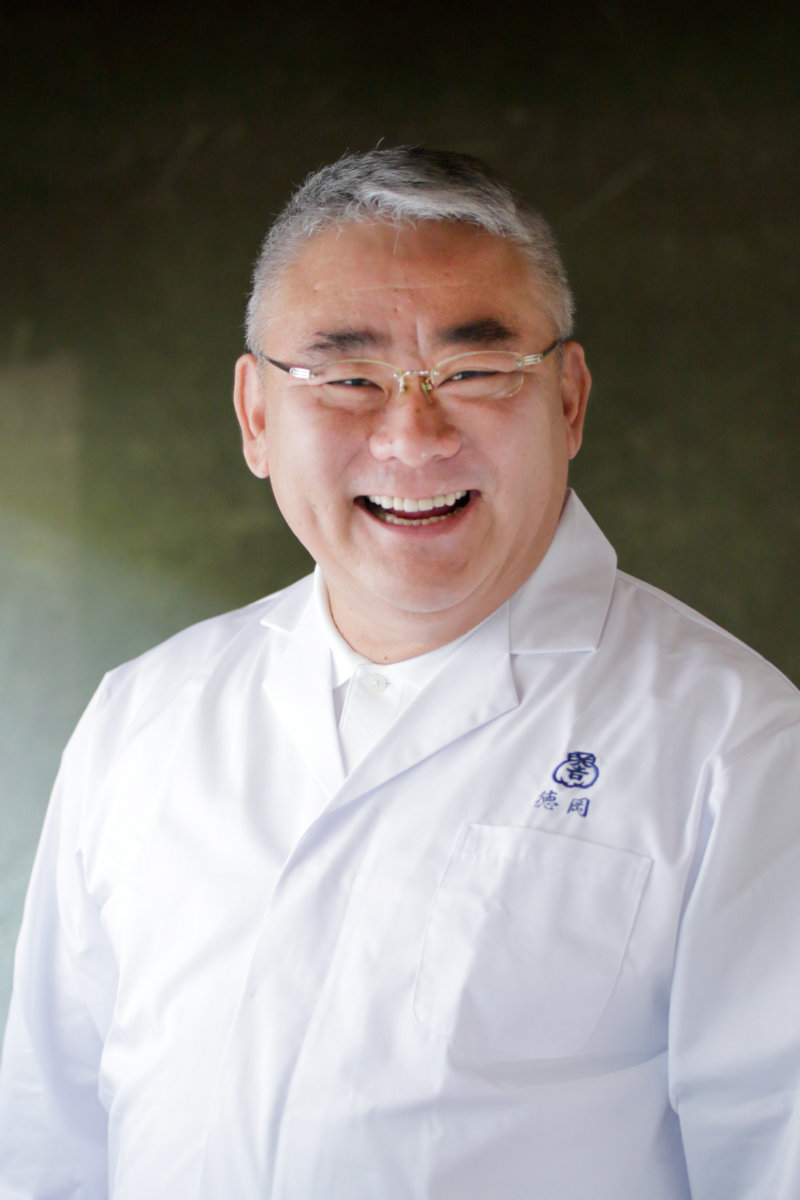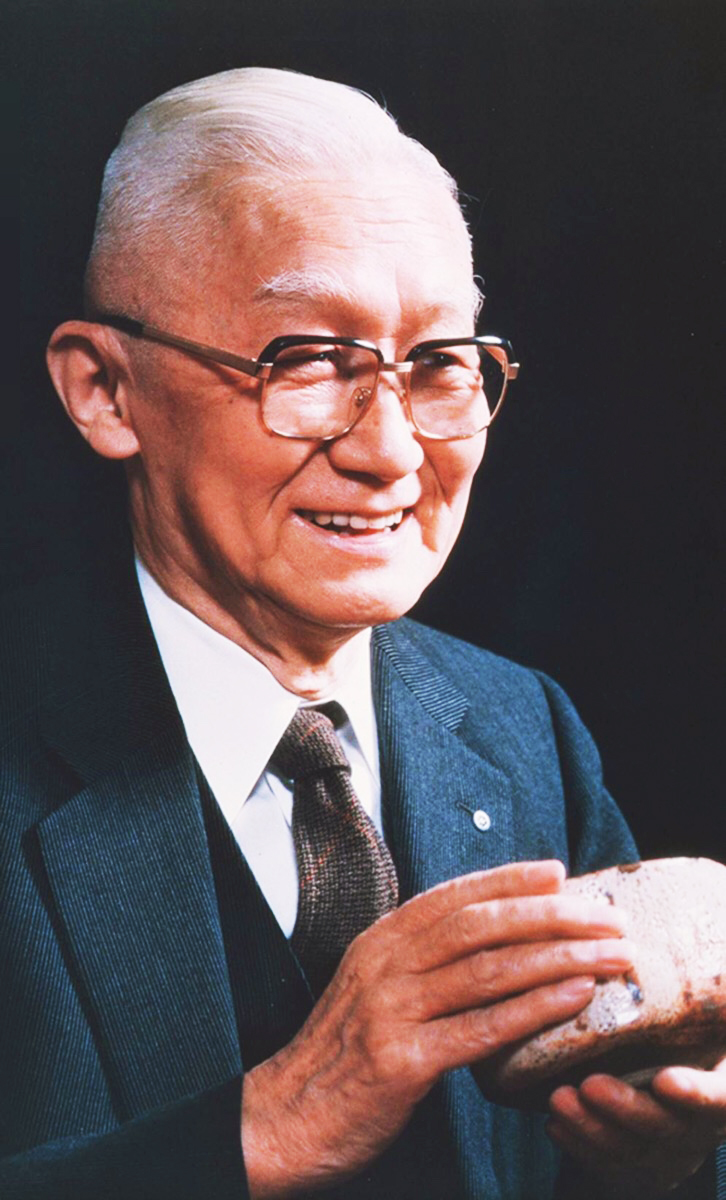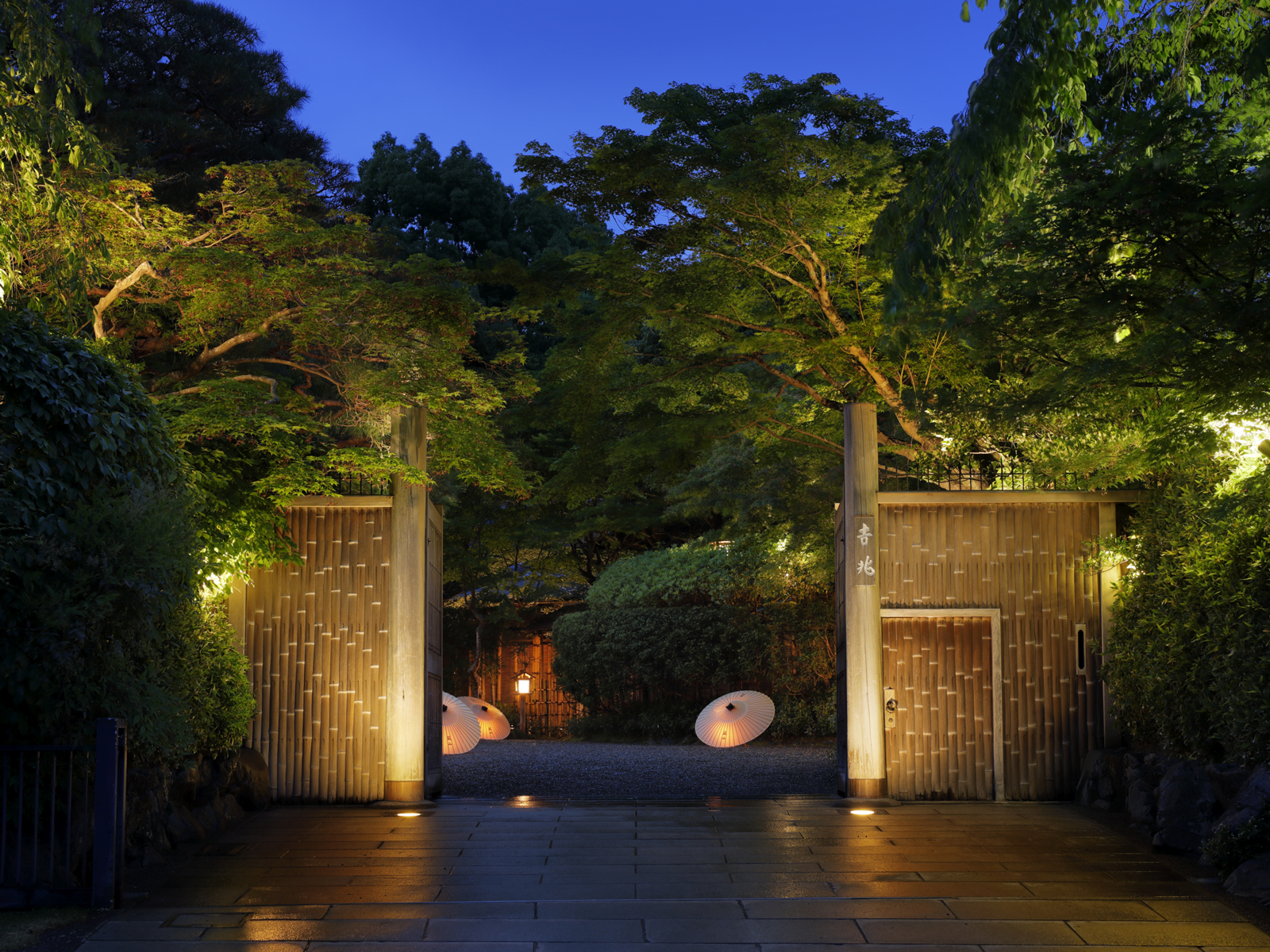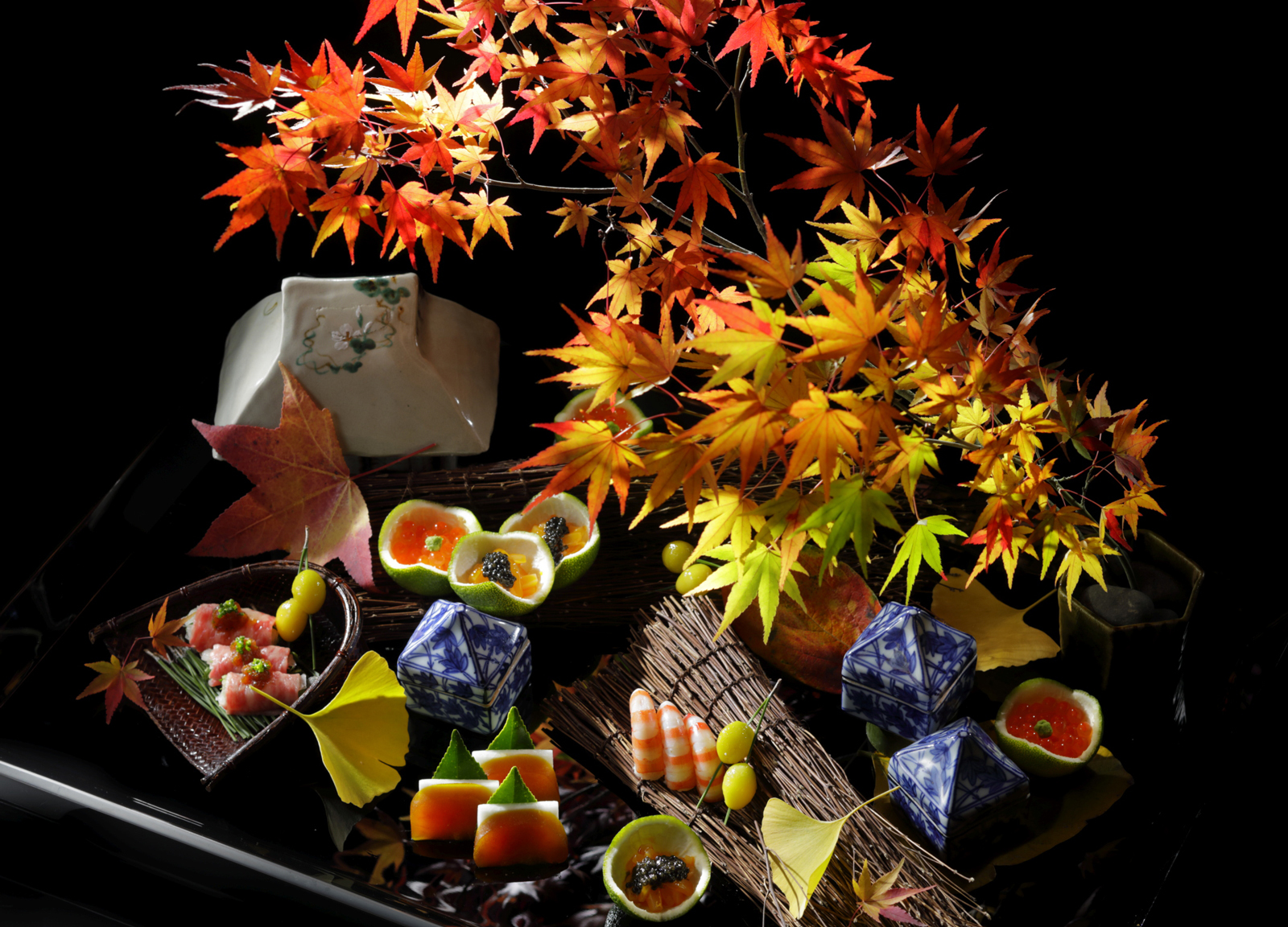The extraordinarily rich multisensory experiences that fill our daily lives depend upon the way our brains process information from each of our different senses (smell, taste, sight, hearing, and touch). Experimental psychologist at the University of Oxford and author of Gastrophysics: The New Science of Eating, Charles Spence has made this phenomena his life’s work.
Legacy & Evolution: A Conversation with a Kaiseki Legend
Chef Kunio Tokuoka has been working in the kitchens of KITCHO, the legendary Japanese haute cuisine restaurant for close to 40 years and is now running the show. He follows in the hefty footsteps of his grandfather the founder of KITCHO Teiichi Yuki.
Born in 1960, Kunio Tokuoka has brought kaiseki (Japanese haute cuisine) into the public eye with various involvements with the press, to promote not only KITCHO which are some of the world’s most award-winning restaurants, but the intricacy and refinement of kaiseki.
At age 20, he began training under his grandfather’s guidance, Kunio has now worked in the kitchen of KITCHO close to 40 years, carrying on the traditions laid by both his mentor and father-in-law.
I talk with the chef about his childhood, cooking philosophy, traditions in kaiseki cuisine and ingredients.

As the 3rd generation chef of one of Japan’s most legendary restaurants, what has influenced you most to become a chef? Did you always know that you will follow your grandfather’s steps?
My grandfather, Yuki Teiichi, and grandmother established the Japanese restaurant that my family continued. I grew up in this environment of food. It was natural that I would be the third-generation chef of the restaurant. But there was a period at the age of nineteen that I thought I would become a musician and considered giving up the plan to inherit the restaurant.
Of course, my parents and the people around me were strongly opposed to this and we had many discussions regarding this. I believed that becoming a musician would bring happiness to many people and struggled daily with this. I met with a Buddhist monk that my family respected, Soukou Morinaga, for his counsel. In one word he said that I should undergo training at the temple. Right then and there my long hair was shaved completely, like a monk, and I started Zen training. Waking up at 3 a.m., reciting the sutra, meditating, cleaning, preparing the meals and the bath were part of my training. Winter was extremely cold and it was a tough time.
Everyone wanted me to become a chef. While training at the temple I selfishly thought that being a musician was not a bad thing. Many people were worried about me and I thought that the training was very difficult. I felt that everyone was feeling negative, myself included. I tried to think about what I could do to make things better and positive for everyone.
Ultimately, I concluded that I would become a member of Kitcho. I didn’t hate cooking but actually I enjoyed it. I decided that I would become a chef.
As a musician it was my goal to work around the world. Instead I could become a chef that would be accepted around the world. At the time the person I was closest to in the world was my grandfather, Yuki Teiichi, and I decided to work side-by-side with him at the restaurant.
My grandfather was admired by many chefs. Through his work he had many interactions with politicians, businessmen, the prime minister, company presidents, intellectuals, and artists. I have been meeting these guests since I was twenty years old. Even to this day I this was an invaluable experience.
Cooking connects people with everything and I believe food enriches things for all.
What is your “Proust’s Madeleine”? First food memories from your childhood?
At an interview to enter elementary school I was asked what food do you like? I replied that I enjoyed salted and grilled saba Pacific mackerel, especially the dark meat of the fish where the blood flows. On the way home after the interview my mother said, “Please say that you like the tai sea bream sashimi. You are the son of a restaurant.” Even now I remember this (with a smile).
How would you describe your cooking philosophy?
Cooking connects people with everything and I believe food enriches things for all.
Cooking connects the diner, chef, staff, as well as the purveyors. The purveyors are connected to nature. The diner together with their guests and everyone behind them are all connected. Food brings together people and connects economically, mentally, and physical things in a rich atmosphere.
I think that everything is connected and that it’s important to consider sustainability of the natural environment.
And, things that have continued for 1,000 years, to create a sustainable society, there are many elements. Logical thinking is important to achieve this.
Science and theory are important when it comes to cooking.
For delicious food it is not just the taste but also the aroma, texture, and the five senses: visual, auditory, taste, smell, and texture are integral to our senses.
The palate has sensors that can recognize sweet, sour, salt, bitter, and umami.
One receptor has been discovered on the tongue to recognize sweet and salt each.
Umami, which is now recognized around the world, has three receptors and bitterness has fifty-three receptors. Taste is one of the five senses that can be used to enjoy flavors, but it also helps the body to avoid dangerous situations. The bitter receptors can identify the subtle differences in bitter flavors. Bitterness is essential to recognize poison as toxins are bitter. Bitterness is essential for living.
In spring sansai (mountain vegetables) has a detox effect. The palate can recognize the delicate bitterness in vegetables. If a person consumes something that is extremely bitter they will spit it out.
For delicious food it is not just the taste but also the aroma, texture, and the five senses: visual, auditory, taste, smell, and texture are integral to our senses.
Bears that awaken after hibernating will seek out young sprouts in the mountains. The poison that has been accumulated in the bear over the winter can be detoxed by eating these slightly bitter plants. The bears have this natural instinct to eat the young sprouts.
Young children will hate the bitterness of sansai (mountain vegetables) as their body has not accumulated enough poison for the need to be detoxed. But adults can enjoy the bitter flavors. Living creatures have the natural instincts to know just how much of the bitter foods to eat to live. This is delicious. Depending on the customer, we bring delicious flavors, not just umami, but it is also important to include some bitter flavors.
In the nose more than 360 receptors have been found. Aroma is very important for cuisine. It heightens the pleasure of enjoying food. Also, if something is spoiled the smell acts as a warning that one should not consume it.
In the mouth there are an infinite number of receptors for texture. Texture is a complex part of deliciousness. Even while eating the texture of a food will change. This is thrilling and interesting and curious, and makes food even more fascinating.
The Japanese language is rich with words to describe texture. For example:
Saku saku for crispy.
Puri puri for the resistance found when eating foods like shrimp.
Nuru nuru for slippery.
Fukkura for soft and light.
Even in the same ingredient the texture will change depending on the thickness. The texture can be altered to make something more delicious depending on how it is cut. Texture is an essential part of Japanese cuisine.
Furthermore, presentation is very important in Japanese cuisine. Something can be considered delicious by only its appearance. If a dish is poorly presented it is not appetizing and will not be eaten.
The interest of the diner is piqued if the food is beautifully presented and that connects to a delicious taste.
In particular the Japanese culture has a unique appreciation for presentation. It is difficult to master this sense but it is essential as it is very effective.
Beyond the beautiful presentation, food becomes even more tastier when one learns more about the ingredients, how the dish was prepared, and the background story. The enjoyment and real charm of Japanese cuisine is not just umami.
Presentation is very important in Japanese cuisine. Something can be considered delicious by only its appearance. If a dish is poorly presented it is not appetizing and will not be eaten.
Tea ceremony had a great influence to your grandfather, Kitcho founder Yuki Teiichi. How does tea ceremony influence your cooking?
My grandfather, Yuki Teiichi, was committed to the tea ceremony. The delicate and expressive style of the tea ceremony influenced his cuisine. When I was young I trained in earnest the tea ceremony.
The tea ceremony is rich with formal manners. Many will find the strictness very difficult. But there is a reason why the tradition has continued over five hundred years. It would not have lasted so long if it was wasteful or unnecessary. The tea ceremony was essential for many people and that is why it has continued.
The room for the tea ceremony is a place for people to connect. Over time the rituals of the tradition have become a guide to how to communicate with people. Not just manners, but one of the goals of the tearoom is to have the outcome of people communicating. There are many ways to entertain guests.

The tea ceremony teaches us that the atmosphere is important and how to create it. By thinking of our guests we can communicate indirectly the changing of the seasons and the passing of time by the condition of plants. The subtle expressions of the changes in nature are thoughtfully made.
By indirectly expressing thoughtfully it may be more meaningful to the guests instead of directly saying that you like them or that you respect them. This concept is connected to cuisine.
My grandfather wrote a poem. “With ingenuity, all nature becomes cuisine.” In the poem he says that even after you have given your all and people are unable to understand, even if your heart is crushed, to never give up. That is cooking. It expresses a way of life. I treasure these words.
Can a “beginner”, someone who has never been to Kitcho or another kaiseki restaurant in Japan understand it and appreciate it?
They can enjoy it! Japanese restaurants provide an environment and experience for that diner.
How important are the traditions in kaiseki cuisine and how are they being changed or adapted to the modern world?
It is important to respect traditions. Traditions that have been passed down through the generations have stood the test of time. By looking into the heart of these traditions we can find the essence.
Now and looking to the future the sense of value at how we’ve adapted these traditions and Japanese food and the traditional values will continue to evolve. We must adapt to each period as we pass down these traditions. If we don’t continue to pass these down we will lose our traditions.
As the water, atmosphere, soil, and natural environment changes so will the vegetables, seafood, and meat. Following this the cuisine will also change. The palate and orientation of the diner and their experiences as well will evolve. To sustain these traditions we too must evolve.
It is important to respect traditions. Traditions that have been passed down through the generations have stood the test of time. By looking into the heart of these traditions we can find the essence.
Since French, American and other world’s best chef started travelling to Japan, kaiseki has greatly influenced the Western fine dining. Is there anything that has inspired you from outside Japan?
Yes! I find inspiration within Japan as ingredients or how things are eaten changes in each region. It is the same experience as outside of Japan.
In the first place, international cuisine looks different from Japanese. The dishes and vessels, and the people are different. Enjoying a meal together is also influenced by the guests at the table. For example, in Western food many ingredients are made into a sauce that is eaten with a dish. But Japanese food is often based on variations of a soy sauce so the approach to the sauce is different.
An impressive chef is Ferran Adria of El Bulli. He has changed my concept of food, it was shocking. Ferran has come to our Arashiyama restaurant about three times. I participated in the 2005 Madrid Fusion. At the time I sat next to Ferran for a media interview and heard him say that he was strongly influenced by the cuisine at Kyoto Kitcho. I remember being pleasantly surprised to hear this. Ferran has changed the understanding of food for many people around the world. He’s also had a big influence on many chefs.

How do you choose the best ingredients? Do you work with local suppliers only or do you buy ingredients from all over Japan?
I taste all the ingredients, pantry items, even the water. Not just myself, but my whole staff participates in tastings. In the case of rice each autumn we have a contest to decide which rice varietal we will use for the upcoming year. Everyone on staff participates in the tasting. We interview the rice farmers to better understand how the rice is raised, nurtured, and the harvest yield. These interviews take over a month.
Pantry staples including kombu (kelp), katsuobushi (smoked bonito flakes), seasonings, and even water are constantly being considered. We observe our customers and react accordingly. Depending on the season and on the dish we will change not only the kombu (kelp) and katsuobushi (smoked bonito flakes) but even where it is harvested.
In our kitchen we have five soy sauces and six salts that are used for specific dishes. Thanks to the well-developed distribution system we are not restricted to only using local ingredients. Of course, we create dishes to showcase super fresh vegetables that are harvested from farms nearby. I would not consider growing vegetables as farming is not easy. I think it’s important to work in collaboration with our outstanding purveyors. We can ascertain how produce is growing, how it’s harvested, the harvest period, storage conditions, storage temperature, and other details that are managed by our purveyors.
Has your cooking style changed over the years? If yes, how?
Yes, my cooking style has changed. While my thinking about cooking has become more complex the dishes themselves have become more basic. While people around the world have become interested with Japanese food, my cuisine has become even more Japanese. I think it’s easy to see the difference.
I have become interested with ingredients from around the world. We have collaborated with an Italian olive oil producer to make an Italian extra virgin olive oil that works well with Japanese cuisine and white-fleshed fish. We are making a Japanese-style caviar with domestically raised sturgeon roe that is seasoned with kombu kelp and soy sauce. There are potential and interesting challenges with using imported ingredients with a Japanese mindset and cooking methods.
What are your favourite ingredients to work with?
Ingredients that are super fresh. We may age some products in house but that can only be done if the items are fresh to begin with.
Freshness is especially important with white-fleshed fish that is delicate and light. Attention must be paid to how and where fish is harvested and to confirm how it is handled until it arrives to the restaurant. On occasion we will request live seafood. I will travel to meet with purveyors to communicate with them directly.
Could you share some of your favourite signature dishes?
The hassun, an appetizer plate that reflects the season, is distinctive.
A selection of small bites that expresses the season are presented on a black lacquer tray. My grandfather and the founder of Kitcho, Yuki Teiichi, started this hassun that emphasized the expression of the tea ceremony, so I would like to pay my respects by continuing this tradition, while allowing it to evolve.
My grandfather was fastidious with the nimono owan soup course. In the past soup was a dish that was to make one feel full and there was not much attention paid to it. Yuki Teiichi was obsessed with the dashi stock for the soup and the ingredients as this dish reveals the restaurant’s house style. I too am very attentive to the suitability of the owan soup course each day.
In the beginning the tea ceremony served rice and a soup. It is said that one can understand one’s sentiment based on how the rice is cooked. The final course of the kaiseki meal is the rice course and I think of how to be creative with this dish.
Kaiseki is highly seasonal. Are there seasons you prefer to others? What is your favourite season?
I like autumn for its bountiful ingredients that are beautiful with its vivid shades of color.

Millions of people around the world love Japanese cuisine without having ever been to Japan. What do you think is the secret of the Japanese cuisine in general?
Japanese cuisine is healthful and compared to other cuisines from around the world the presentation is very different. There is an appreciation for asymmetry and the characteristic atmosphere. The cuisine is presented with subtle, indirect expressions with underlying complex profoundness. Like tanka and haiku, two styles of Japanese poetry, there may be a charm to the mystical and playful approach to the cuisine.
For example, the French cuisine is beautifully presented with uniform symmetry. The tableware all from the same purveyor and from the same time period which has a beautiful effect.
Japanese cuisine is healthful and compared to other cuisines from around the world the presentation is very different. There is an appreciation for asymmetry and the characteristic atmosphere. The cuisine is presented with subtle, indirect expressions with underlying complex profoundness.
Not only in Japanese cuisine will you discover a variety of dishes from various time periods, the shape of the vessels are not all uniformly round. There is an appreciation for dishes that are slightly distorted. A dish presented with a blank space on the plate makes the cuisine more beautiful. Lately this Japanese mindset to food presentation has had an influence on other cuisines, for example lately we are seeing more food presented asymmetrically. Since about 2004 I have been participating in culinary events around the world and I wonder if my presentations have had an influence on this trend.
There may be some inspiration from the tea ceremony. Altering the way something is used than its original purpose. For example, using a cage that is meant for holding fish as a vessel for flowers instead. Another example is by using bamboo as a dish to present food. It is interesting to take advantage of beautiful things that exist in nature.
Restaurants are a place to nourish and enrich the minds of not only our guests but also including purveyors, manufacturers, and employees in a comfortable space with a warm environment. It is essential to keep in mind the essence of what you are doing even as things become new.
What do you think are the challenges of fine dining in Japan? How do you see the future of kaiseki?
Whatever you choose to do, do the best that you can with earnest. To be of service to many guests it is important to be well-prepared.
Restaurants are a place to nourish and enrich the minds of not only our guests but also including purveyors, manufacturers, and employees in a comfortable space with a warm environment. It is essential to keep in mind the essence of what you are doing even as things become new.
It is important to understand that originally kaiseki cuisine was serving food in an environment that brought people together and connected them.
In modern times it is said that artificial intelligence and the most advanced technology can realize sustainability, but essential are the traditions that have stood the test of time. Moving forward to accommodate many people we will continue to respect traditions and modern technology adapting and reacting as necessary. Here we see a nod to the future. It is important that together we consider what is important. I think it is important to follow the Japanese mentality of not thinking only of oneself but of how together we can be happy and succeed.
Do you cook at home? If yes, what is your favourite dish to cook?
Yes, I cook at home. I’ll create something based on what we have in the house. I often make noodle-based dishes.
Translated by Yukari Sakamoto. yukari.shinji.sakamoto@gmail.com
